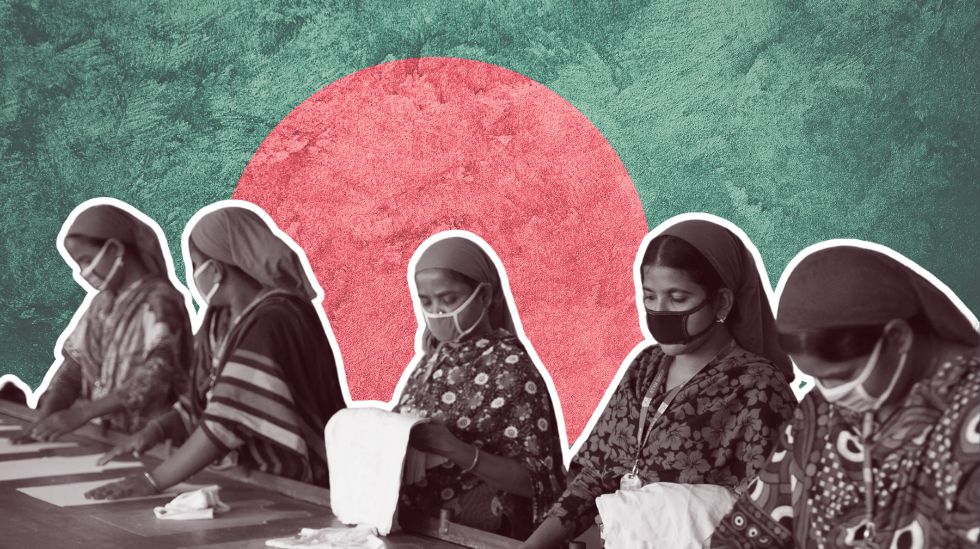Bangladesh stands at a difficult economic crossroads. Once celebrated as a miracle, growth has slowed to its slowest level since the pandemic, with GDP increasing at only 3.97% in FY2024-2025. Inflation is still stubbornly high, and many economists now caution that previous impressive growth estimates were probably exaggerated for political reasons, hiding serious structural flaws. Half the nation’s human potential-its women-remains underused at this precarious time. Fairness isn’t the only consideration here. The issue is one of economic survival too.
Increasing the number of women in the workforce has the potential to change Bangladesh’s future. More women in safe and productive formal occupations will increase household earnings, lower poverty, and increase shock resistance. However, development has been uneven, brittle, and limited by structural obstacles, necessitating immediate policy action.
The challenge is glaringly evident from the numbers. The labor force participation rate for women is approximately 44%, which is significantly lower than that of men (81%). That disparity is a huge amount of unrealized potential. Even worse, the direction has been downward lately. Bangladesh Bureau of Statistics’ (BBS) Labour Force Survey 2024 reports that women accounted for the majority of the 1.7 million reduction in the labor force between 2023 and 2024, with female involvement dropping from 25.3 million to 23.7 million. Approximately 2.1 million jobs, 86% of which were held by women, were lost in the first half of FY25 alone.
These jobs weren’t safe or productive. Almost 97% of Bangladeshi working women are ensnared in low-wage, unprotected, contract-free, informal labor. Such occupations do not offer security or opportunities for advancement. The productivity advantages that come with stable, well-paying employment are blocked by informality, even though it may allow survival. The economic contributions made by women remain insecure and underappreciated in the absence of formalization.
Where do women work now? According to the Bangladesh Bureau of Statistics Labour Force Survey (2022), a major portion of women are employed in agriculture and rural activities. Rural women’s engagement increased from 38.6% to 51% between 2016-17 and 2022, while urban women’s participation dropped abruptly from 31% to 23%. Many people view this employment as a necessity rather than an opportunity-low-wage farm labor or unpaid household labor as opposed to upward mobility.
The ready-made garment (RMG) industry once absorbed millions of women into factory employment that provided a road to empowerment and pay, however meagre the amount is. Its potential, however, is waning. On certain metrics, the representation of women has declined, and many workers continue to make significantly less than a living wage even with sporadic increases in the minimum wage. Wage order noncompliance is still widespread, which compromises the sector’s ability to serve as a means of escaping poverty.
Women encounter a glass ceiling even when they start earning a living. According to gender data from the World Bank, women only make up 8-9% of senior and middle management roles. Considering how prevalent women are at the entry and production levels, this disparity is concerning. Businesses that exclude women from senior positions waste potential, lower production, and deprive younger women of role models who may encourage them to continue working.
What causes this imbalance to continue? The causes are numerous and reinforce one another. Women are nevertheless pushed by social standards to work informally, part-time, or from home. Women are still responsible for providing care, although there are few reasonably priced daycare centers and after-school activities. Safety issues in the workplace and on transit deter women from taking night shifts or pursuing occupations that are distant from home. The labor markets remain poorly diversified, and low-skilled female workers are being displaced at a disproportionate pace by automation and technological improvements. Age limitations, discriminatory hiring practices, a lack of social safety, and a lack of strong enforcement of equal-pay rules further restrict the options available to women.
The effects are felt throughout the economy, not just in households. Low female participation reduces dynamism and limits the labor supply. The government’s capacity to invest in public goods is constrained by informality, which lowers consumption and narrows the tax base. Innovation and productivity are hampered by underrepresentation in leadership positions. Unlocking women’s potential is imperative if Bangladesh is to continue growing in an increasingly unpredictable and competitive world.
So, what must be done? Although there isn’t a single answer, obstacles can be removed, and incentives can be changed with a well-thought-out combination of policies. The first step is prioritizing formalization. By simplifying registration, offering targeted subsidies, strengthening labor inspection, and helping SMEs integrate formal hires, women can gradually acquire stable work. Secondly, financing for childcare, after-school programs, and affordable, secure transportation can expand the options available to women. Without these initiatives, many mothers will be excluded from paid employment. Thirdly, to keep firms competitive, minimum wage laws must be enforced with supervision, penalties for disobedience, and productivity-boosting measures. Fourth, we must address the leadership issue. Open promotion policies, training, mentoring, and representation objectives can ensure that women move up the ladder rather than stay at the bottom. Partnerships between the public and commercial sectors may hasten this transformation. Fifth, labor-market policies must be more active. Retraining displaced workers, training young women in digital skills, and support for rural entrepreneurship can open up new opportunities for decent work. Finally, it is critical to challenge social norms. Perceptions of women’s leadership and work can be altered by public awareness campaigns, conditional financial aid for girls’ education, and engagement with local authorities.
Bangladesh has proven its ability to scale social innovations from microfinance to community clinics to education drives. The challenge now is to embed those successes into a labour market strategy that treats women’s participation not as a side issue but as central economic policy.
The choice is clear. Continue with a half-utilized workforce and risk slower, unequal growth-or invest in women’s paid work and unlock a new engine of prosperity. Bangladesh’s future depends on its women. The time to act is now.
Arpita Chakraborty, Research Associate, SANEM.
Email: chakrabortyarpita229@gmail.com



RECENT COMMENTS